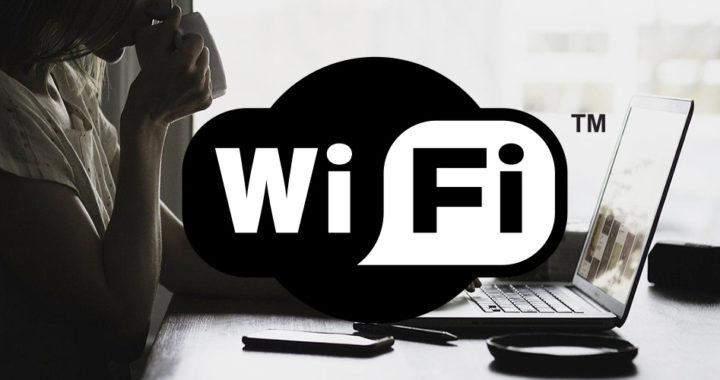Wi-Fi is a set of wireless communication protocols based on the IEEE 802.11 local assess network technical standards and developed by the Wi-Fi Alliance. The technology has been used in local area networking, including in accessing and interfacing with the Internet using compatible devices, as well as in peer-to-peer or device-to-device wireless connections.
The technology generally works by connecting a compatible device to a wireless router that in turn, allows this device to interface with the local area network or the Internet. As a peer-to-peer pairing technology, it allows two devices to connect and interact with each other at a range beyond the capabilities of Bluetooth technology.
Wireless connectivity is possible using electromagnetic radiation within the ultra high frequency or UHF and super high frequency or SHF bands. The specific frequency bands are 2.4 GHz and 5 GHz. The newer Wi-Fi 6E standard uses the 6 GHz band. Hence, technically speaking, Wi-Fi uses microwave frequencies of the electromagnetic spectrum.
The Pros: Advantages and Benefits of Wi-Fi
1. Convenient Connectivity
Of course, one of the obvious advantages of Wi-Fi is wireless connectivity. It allows multiple users to connect to network resources and thus, to a local area network or the Internet without using wires as long as they are within the range. Deployment and scaling are also easier than a wired network. There is no need to install and run cables and switches. Connecting to a router is also straightforward. There is no need for complicated configurations.
2. More Wireless Applications
The technology enables connecting compatible devices and accessing those connected to the local network. Examples include wireless access to a compatible printer or a closed-circuit security camera. It has also paved the way for modern devices such as smart televisions, speakers, smart lamps or lighting fixtures, other home fixtures and kitchen appliances, and virtual assistants, thus creating a smart home system.
3. Support for Internet of Things
Because it enables more wireless applications, Wi-Fi technology also supports the implementation of the Internet of Things or IoT. Specific applications or use-case examples of IoT include wireless sensor networks and security systems, home and building automation, and residential and commercial energy management, among others.
4. Improved Productivity
A wireless network that supports multiple connections means that a user can use more tools for improving productivity. There is no need to use a desktop or laptop computer when accessing the Internet to send an email. Files are readily accessible within the shared network or using the cloud. Across the workplace, the mobility wireless connectivity provides means that the movement of people is not limited to a designated workstation.
5. Wi-Fi Hotspots and Mobile Hotspots
Several cities in developed and developing countries have placed Wi-Fi hotspots as part of the communication infrastructures. These hotspots allow people to connect to the Internet without using mobile data. Some cities provide citizens with free access to these networks. Moreover, using the technology, a mobile device can become a mobile hotspot by converting its 4G or 5G connection into a Wi-Fi signal to allow other devices to connect.
6. Wi-Fi Direct Superiority
Another advantage of Wi-Fi technology is that it is superior to Bluetooth and other wireless short-range communication technologies. Specifically, Wi-Fi Direct allows devices to communicate or interface with one another at longer ranges without the need to go through a local network. Specific benefits over Bluetooth include support for longer range, reduced latency, and increased throughput or faster data transfer speeds.
The Cons: Disadvantages and Limitations of Wi-Fi
1. Obstructions and Interferences
There are different sources of interferences that can affect the quality of wireless connectivity. For example, walls and floors can obstruct signals because EM radiation with higher frequencies cannot efficiently pass through certain objects. Other electromagnetic waves from home appliances, mobile devices, and other radio communication devices can also cause frequency and co-channel interference if they operate at the same frequency or use the same channel. These are the reasons why modern routers provide 2.4 GHz and 5 GHz frequency options, as well as a feature for selecting different channels.
2. A Note on Wi-Fi Pollution
Another drawback is Wi-Fi pollution. This phenomenon happens when there is an excessive number of access points or Wi-Fi routers in a given area. It can prevent users from accessing a specific access point and negatively affect the signal-to-noise ratio between access points. These issues are commonplace in high-density areas such as apartment complexes, office buildings or commercial spaces, and dense neighborhoods of small homes.
3. Limitation in Connection
Of course, although a router allows multiple connections, most would only allow up to 30 devices. Note that the Internet speed does not weaken if more devices are using the same account. However, the Wi-Fi bandwidth becomes weaker with the addition of more devices. Limited bandwidth due to overcrowding means slow data transfer speeds. Fundamentally, the data transfer rate decreases when the number of devices connected to the wireless network increases. Some of the workarounds include using multi-band routers, installing repeaters, and subscribing to another Internet account.
4. Some Security Concerns
Connecting to Wi-Fi is considerably secured given the right security configurations. However, some users might have a hard time setting up the most suitable configurations such as passcodes or passwords and type of encryption. Remember that wireless communications are more prone to hacking than wired connections. Furthermore, connecting to public hotspots can expose private data to other users connected to the same networks. Some hackers also use public access networks to lure in unsuspecting individuals. Connecting to a wireless network can give others access to private data contained in their devices.
FURTHER READINGS AND REFERENCES





